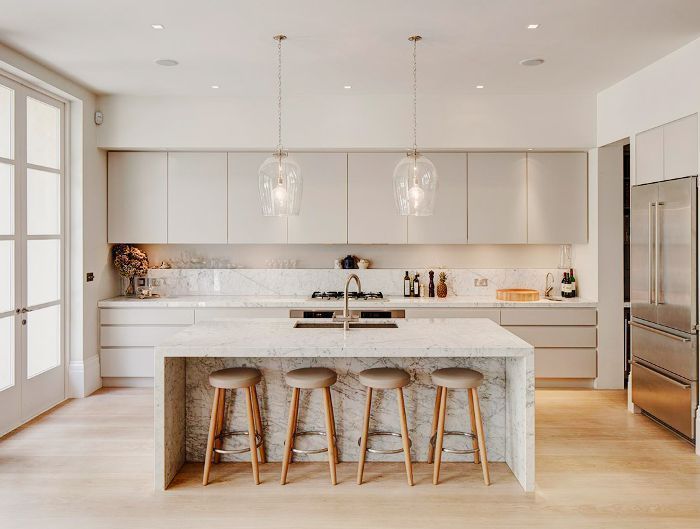Introduction
Designing a kitchen involves thoughtful planning, especially when it comes to size, layout, and measurements. A kitchen is one of the most used spaces in a home, so it’s important that the space works for you. From the right height of countertops to the best direction for your kitchen, here’s everything you need to know for creating a comfortable and efficient kitchen.
1. Minimum Kitchen Size:
When planning your kitchen, it’s important to make sure you have enough space for movement and functionality. The minimum recommended kitchen size is at least 8 feet in length and 5 feet in width. Here’s why:
- Width of 5 feet allows you to have space for at least 2 feet for the countertop and still have 3 feet left for working comfortably.
- Length of 8 feet provides enough room for placing important appliances like your stove and sink with adequate clearance between them for safe cooking and cleaning.
2. Proper Clearance for Appliances:
The key to a functional kitchen is ensuring that appliances like the stove and sink are placed efficiently.
- A stove typically has a length of 14 inches, and your gas top should be at least 30 inches long. Keeping a 2 feet gap (24 inches) between the stove and the sink is recommended for safety and ease of use.
- For proper ventilation, leave enough room behind appliances to ensure airflow and to avoid overheating or clogging.
3. Countertop Height:
The height of the kitchen countertop plays a huge role in ensuring comfort while cooking. The recommended height varies depending on the person’s stature.
- If the person using the kitchen is 5 feet tall or shorter, a countertop height of around 2.78 feet should work well.
- For individuals taller than 5 feet, the ideal countertop height should be around 3 feet (36 inches).
- Always remember that countertops should align with your waist to allow for comfortable cooking. Keep in mind that if you use a granite or marble countertop, these can add 1 to 2 inches to the height.
4. Kitchen Layout:
The layout of the kitchen is crucial to ensure smooth workflow and movement. Here are a few tips:
- If you plan to have two people working in the kitchen at the same time, allow at least 4 feet of space between countertops or workstations. This ensures that you can move around without interfering with each other.
- Cabinet Depth: The cabinets under the countertop should have a minimum depth of 2 feet. This depth ensures enough storage space without compromising on the ability to reach into the cabinets easily.
5. Kitchen Direction (Vastu Tips):
According to Vastu Shastra, the best direction for the kitchen in a house is the South-East direction, also known as the Agni Corner. This direction is believed to promote positive energy and better cooking experiences.
6. Cutting for the Kitchen Cabinet:
When designing your kitchen cabinets, ensure there’s enough cutting space between the base cabinets and the floor. The recommended gap is around 2 to 3 inches to protect wooden cabinets from moisture damage due to floor cleaning or mopping.
7. Chimney Placement:
A kitchen chimney is essential for removing smoke and odors. The ideal placement for a chimney is above the stove, around 28 inches from the stove. This ensures it captures the smoke effectively while also giving you enough room for comfortable cooking.
Conclusion:
Designing a kitchen is all about balancing functionality with comfort. From countertop height to appliance placement and even direction, every detail plays a part in creating a kitchen that works for you. By following these tips, you can ensure that your kitchen is not only stylish but also efficient and comfortable.

